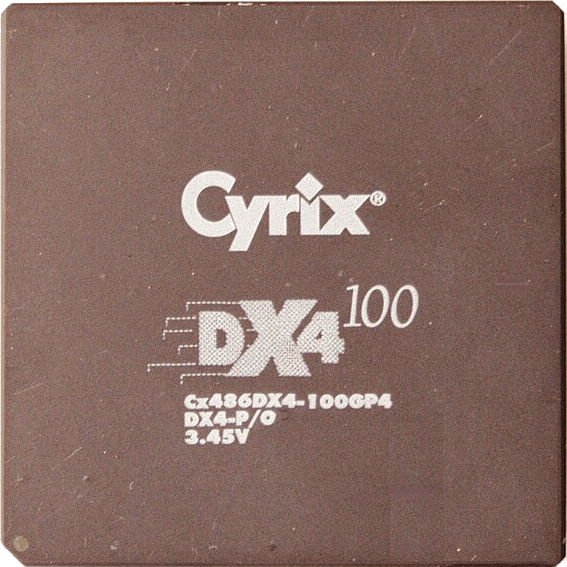The easiest way to do it is by running a Kiwix server and hosting a copy of Wikipedia with that.
- 2 Posts
- 22 Comments
I’ve subscribed to their RSS feed, but their server is so unreliable, my feed reader complains all the time that it is unreachable. When I manually retry it mostly works, only to fail again later. I’m wondering what’s going on there. I never have this problem with any other feed…
Same with GrapheneOS.

 4·16 days ago
4·16 days agoOops, you are correct of course, 6A is what I meant, plain 6 should work fine also most of the time, but there is pretty much no point going for that, unless you have that deployed already.

 8·16 days ago
8·16 days agoCan anyone explain to me if a headless chrome browser is dangerous the way a regular chrome browser is?
Almost. You want to make sure to keep it as up-to-date as you would a regular Chrome browser. It does almost everything a regular Chrome does, including running arbitrary scripts on websites.

 5·16 days ago
5·16 days agoAnyone have experience converting from 1G LAN to 2.5 or even 10?
Going from 1 G to 2.5 G is fairly cheap these days. You can almost certainly use the same cabling, even when you’ve got only Cat.5e cabling. While you can do 10 G over copper, I wouldn’t suggest doing that, since it consumes quite a lot of power compared to both 1 G and 2.5 G. You’d need Cat.6E for reliable 10 G over copper.

 5·18 days ago
5·18 days agoSure, I’m not saying this never happens, but I’d argue this is the exception not the rule. Especially when it comes to DDR5 which is still quite new, so there should not be that many laptops with dead batteries with such memory around yet. It would be a different story with DDR4, not that I would suggest that they use DDR4. And the SSD form factor they used isn’t very common, so it is probably even less likely that people have such SSDs lying around. I still appreciate that they allow me to buy the machine without memory/storage.

 10·18 days ago
10·18 days agoThe point of the DIY edition is that you could just reuse some old RAM or SSDs.
In theory, yes. I don’t think it is very likely that people have DDR5 SO-DIMM modules lying around, let alone 2230 SSDs. I don’t understand why they weren’t able to go for the way more common 2280 form factor for the SSD at least.

 202·22 days ago
202·22 days agoThanks for pointing this out! I probably would have missed this, since I didn’t expect such a change for a patch release.
Their documentation mentions:
For jellyfin to know which reverse proxy is trusted, the IP, Hostname or Subnet has to be set in the Known Proxies (under Admin Dashboard -> Networking) setting.
Does this really mean, that the only way to configure this is through the web UI? This is kind of a problem when deploying it, since without the reverse proxy I can’t reach the Jellyfin server. Is there no way of doing this outside the web UI, via a config file or something?
Edit: Apparently the configuration for the proxies is stored in Jellyfin’s
network.xmlconfig file. So it should be possible to do this without manually configuring it via the web UI.Another edit: It works. Adding
<KnownProxies>[proxy ip or hostname]</KnownProxies>in place of the empty<KnownProxies/>key to that config file does the trick.

 1·24 days ago
1·24 days agoI’m not sure why you think manufactuers of SoCs (or entire phones) - which aren’t used by Google directly (as in: used by Google in their own products or sold by Google as their own product) - provide drivers to Google. They don’t, because there is no point in doing that. This is not how the Android eco-system works or the business of selling those SoCs for that matter.
SoC manufactuers sell their SoCs to companies who want to build Android phones (or they build their own like Samsung). With those SoCs they provide a BSP (board support package) that includes all the bits needed to bring up a system running on that partricular SoC. Google has pretty much nothing to do with this, except that Google recommends a certain Linux kernel version (with a bunch of Android-specific patches) for a given Android version, which SoC makers often (but not always) use as the base for their customized kernels.
It is not like Google provides the operating system including all device specific drivers to the device manufacturers. They don’t care about that at all. They provide AOSP (which is open source, so anyone can get that) as well as their proprietary stuff like Google Play etc. That’s pretty much it.
There is a lot not to like about many Android phones (or rather smartphones in general), when it comes to their openness in regards to software. And it is perfectly fine to criticize those involved, but you should direct your criticism at the correct parties. Google isn’t the bad guy in this instance.

 41·24 days ago
41·24 days agoYou are talking about phones made by Google. I am talking about ALL the phones using Android and how difficult or sometimes impossible it is to use anything but Android.
That’s not what you were saying. You were explicitly talking about Google. Also, implying it is Google’s fault that other manufacturers don’t let you install other operating systems easily is pretty bizarre. If you want to complain about that, at least complain about the right companies. Those are usually the phone manufacturers and/or the SoC manufacturers. The SoC manufacturers often times are particularily problematic, since they often do not publish open source drivers at all or in a very limited fashion.

 4·24 days ago
4·24 days agoNo, unlock as in: You can install whatever operating system you want. No need for “jailbreaking” on Google phones. They officially support unlocking the bootloader (and re-locking it later as well!). There are many things not to like about Google, but how they handle their phones when it comes to openness is certainly not one of them. Pretty much all other phone vendors are much worse than that (except for maybe a few small ones like Fairphone).

 21·24 days ago
21·24 days agoHow about not letting Google have exclusive rights to the drivers for all the phone hardware?
What exactly do you mean by that? Google is one of the few companies that let you easily unlock their phones so you can do whatever you want with them.
It’s on April 1st, but nobody takes it seriously.

 291·29 days ago
291·29 days agoWhat a heap of crap.
I like Miniflux.

 4·2 months ago
4·2 months agoThe at load efficency isn’t always the most important metric, depending on what you are using the machines for. If they are mostly idle, efficiency isn’t too bad. Many server tasks don’t load the CPU to the fullest anyway.

 5·2 months ago
5·2 months agoThey are not too terrible really. 3rd gen i7 is the Ivy Bridge generation, so 22 nm. For many homelab server tasks the CPUs would be just fine. Power efficiency is of course worse than modern CPUs, but way better than the previous 32 nm Sandybridge generation. I had such a system with integrated graphics and one SSD and that drew 15 W at idle at the wall.

 0·2 months ago
0·2 months agoPi Zero uses the CPU from the 3
No, the original Pi Zero uses the CPU of the Pi1 (only clocked higher). So it is quite a bit slower than a Pi 2, since it has only a single ARMv6 CPU core. Still fine for a DNS server on a typical home network.


Correct, you summarized that well.